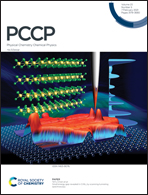Rational design of the Z-scheme hollow-structure Co9S8/g-C3N4 as an efficient visible-light photocatalyst for tetracycline degradation†
Abstract
The development of photocatalysts with high catalytic activity that are capable of full utilization of solar energy is a challenge in the field of photocatalysis. Accordingly, in the present study, an efficient Z-scheme cage-structured Co9S8/g-C3N4 (c-CSCN) photocatalyst was constructed for the degradation of tetracycline antibiotics under visible-light irradiation. The Z-scheme charge-transfer mechanism accelerates the separation of photogenerated charge carriers and effectively improves photocatalytic activity. Moreover, c-CSCN has a hollow structure, allowing light to be reflected multiple times inside the cavity, thereby effectively improving the utilisation efficiency of solar energy. As a result, the photocatalytic activity of c-CSCN is 1.5-, 2.5-, and 5.8-times higher than those of sheet-type Co9S8/g-C3N4 (s-CSCN), c-Co9S8, and g-C3N4, respectively, for the degradation of tetracycline. c-CSCN maintains favourable photocatalytic activity over five consecutive degradation cycles, demonstrating its excellent stability. In addition, c-CSCN performs efficient tetracycline removal in different water substrates. Moreover, c-CSCN exhibits excellent ability to remove tetracycline under direct natural sunlight. This work fully demonstrates that c-CSCN has high catalytic activity and the potential for practical application as a wastewater treatment material.



 Please wait while we load your content...
Please wait while we load your content...